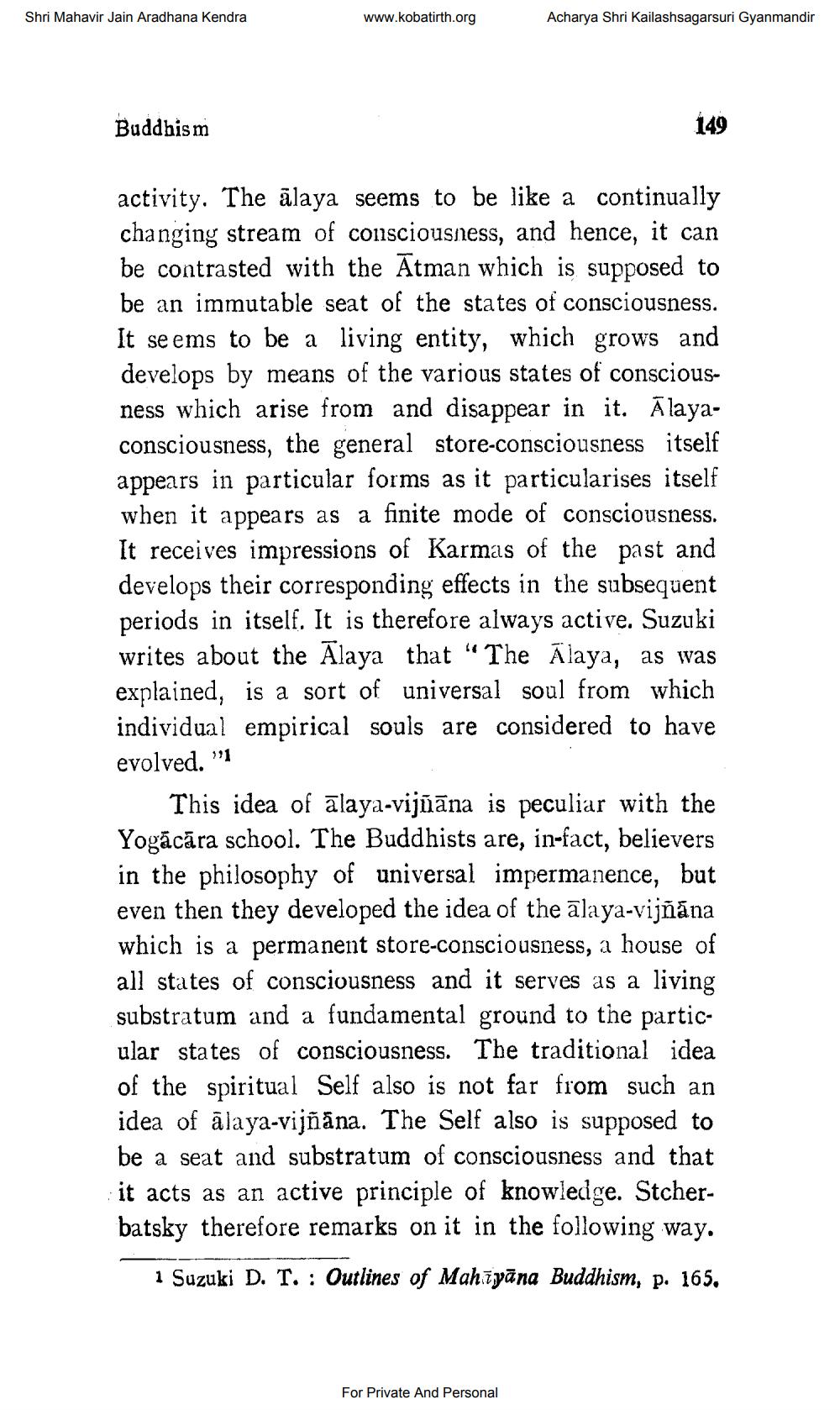________________
Shri Mahavir Jain Aradhana Kendra
www.kobatirth.org
Acharya Shri Kailashsagarsuri Gyanmandir
Buddhism
149
activity. The ālaya seems to be like a continually changing stream of consciousness, and hence, it can be contrasted with the Ātman which is supposed to be an immutable seat of the states of consciousness. It seems to be a living entity, which grows and develops by means of the various states of consciousness which arise from and disappear in it. Ālayaconsciousness, the general store-consciousness itself appears in particular forms as it particularises itself when it appears as a finite mode of consciousness. It receives impressions of Karmas of the past and develops their corresponding effects in the subsequent periods in itself. It is therefore always active. Suzuki writes about the Alaya that "The Ālaya, as was explained, is a sort of universal soul from which individual empirical souls are considered to have evolved."1
This idea of ālaya-vijñāna is peculiar with the Yogācāra school. The Buddhists are, in-fact, believers in the philosophy of universal impermanence, but even then they developed the idea of the ālaya-vijñāna which is a permanent store-consciousness, a house of all states of consciousness and it serves as a living substratum and a fundamental ground to the particular states of consciousness. The traditional idea of the spiritual Self also is not far from such an idea of ālaya-vijñāna. The Self also is supposed to be a seat and substratum of consciousness and that it acts as an active principle of knowledige. Stcherbatsky therefore remarks on it in the following way.
1 Suzuki D. T. : Outlines of Mahīyāna Buddhism, p. 165.
For Private And Personal




